7 copywriting mistakes to avoid for better social media marketing
First impressions are everything – and your copywriting is the start of your relationship with potential customers. They’ll land on your social media pages when searching for a reputable service or product, and chances are if there are any mistakes present in your copy they won’t be staying for long. Here are some common slip-ups and how to avoid them! And remember – although we’re focusing on social media examples here, a lot of these tips hold true for copywriting other areas.
1. Using the wrong tone of voice
Your tone of voice is a huge part of your brand and determines how customers will relate to your business, so it’s important to establish this and stick to it.
Think about how you want to communicate with your customers. As an example, Barclays Bank displays a focused, serious and informative tone of voice throughout their brand.
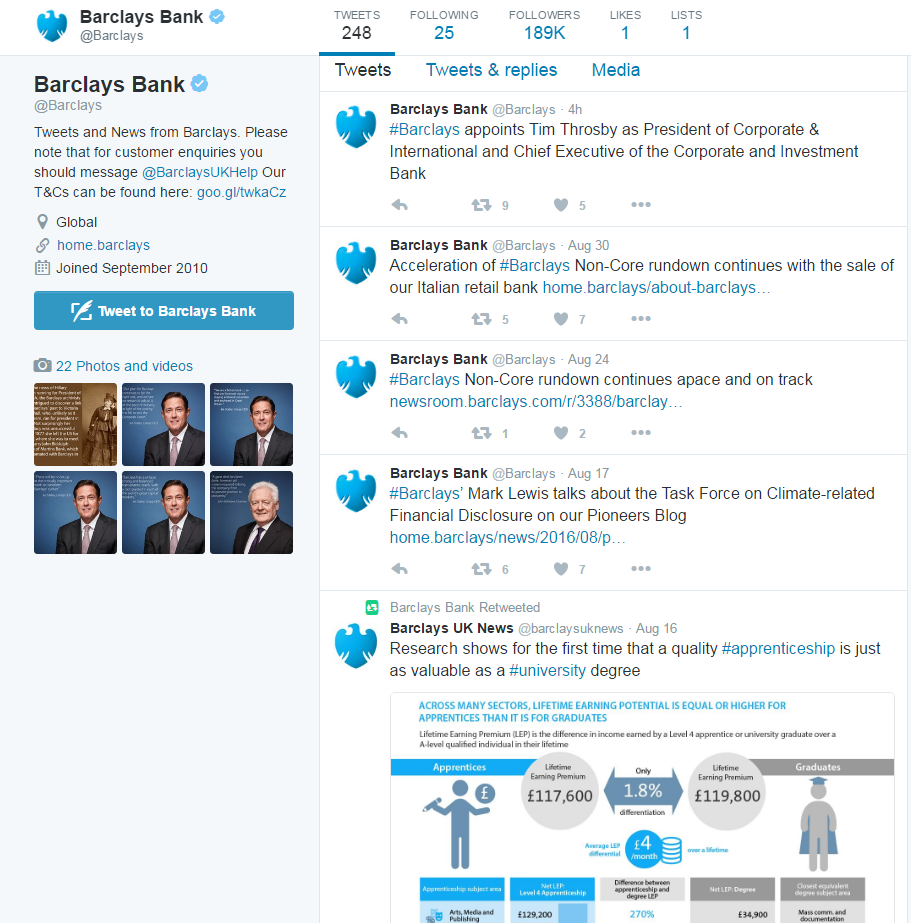
It’s strictly business – no chit-chat. That’s not to say all banks have to take this approach to their social media. Metro Bank’s Twitter page is much more chatty and informal, so how you choose to relate to your customers is really up to you – regardless of what kind of business you run.
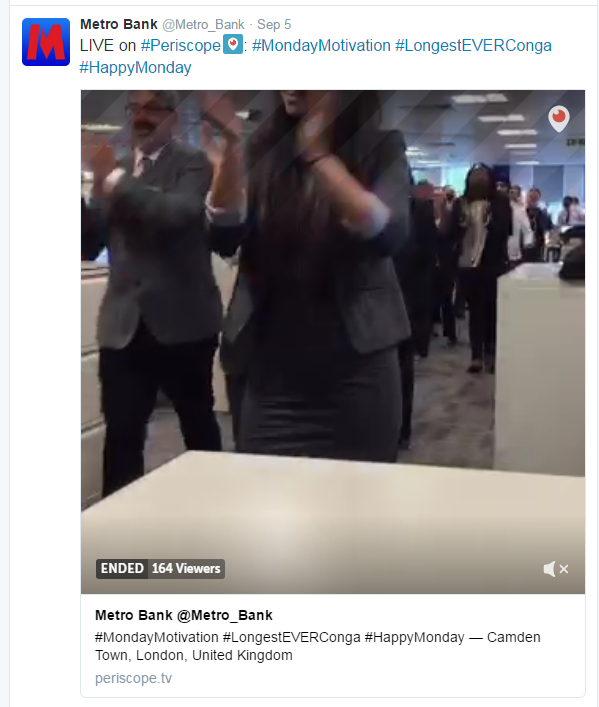
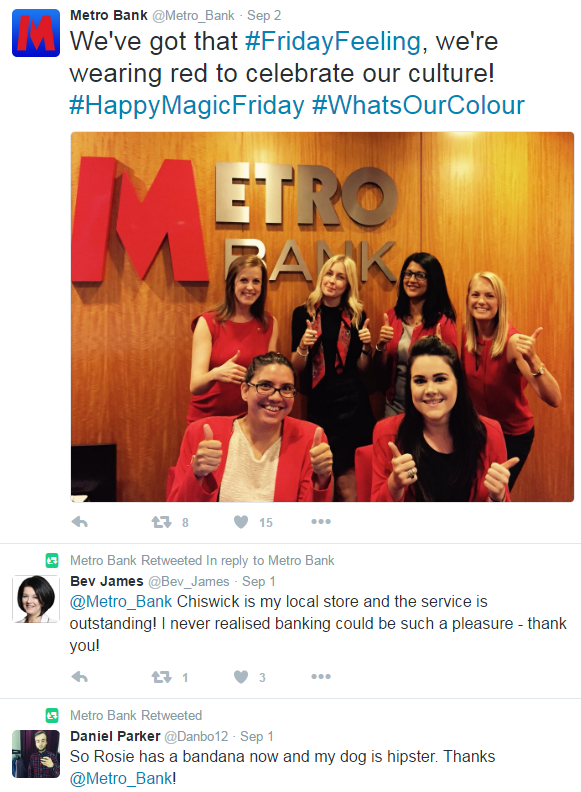
They’re two completely different banks, but what do they have in common? They represent themselves in a strong, clear way through their tone of voice. There’s no chopping and changing, and their tone of voice is consistent throughout all areas of their brand, meaning their customers know exactly how to communicate with them. Check out this guide for further information on using the right tone of voice for your business.
2. Using the same copy for every social media channel
Chances are, the reason you pick up your phone and scroll through your Instagram feed is not the same reason you log in to check your Facebook homepage, and your customers are no different! People expect variety from each of the social media channels they use, so why not mix it up?
This is actually a great chance to sharpen your marketing skills by applying different techniques to suit various audiences. Take a look at these examples from YPlan who use their Facebook mainly to promote local events and news, while their Twitter page is packed with funny pictures and entertainment for their followers.
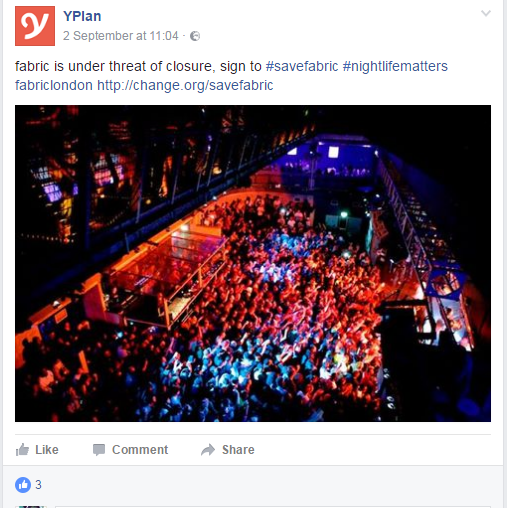
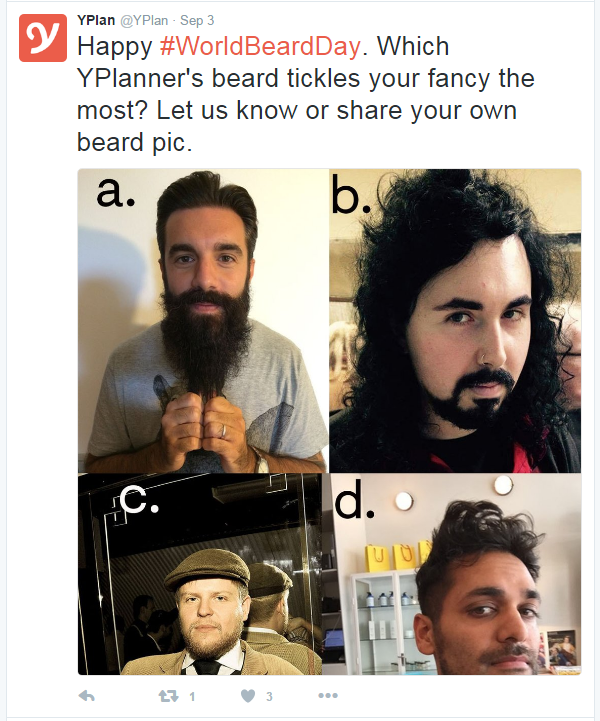
3. Incorrect use of hashtags
Hashtags are a great way to increase engagement and link your content to relevant information. But it’s crucial to use them in the correct way or you could actually end up decreasing engagement with your posts.
Loading a Twitter post with hashtags when you only have 140 characters to make a point isn’t great practice. Tagging one or two relevant keywords within, or at the end of your post like this example from Asda works a lot better. Follow the same rule with Facebook to avoid spammy-looking content.

Now, if you’re working with Instagram, you can loosen the reigns a little. As long as your hashtags are relevant, you can use plenty of them to get your content seen, like fitness brand Protein World does here.
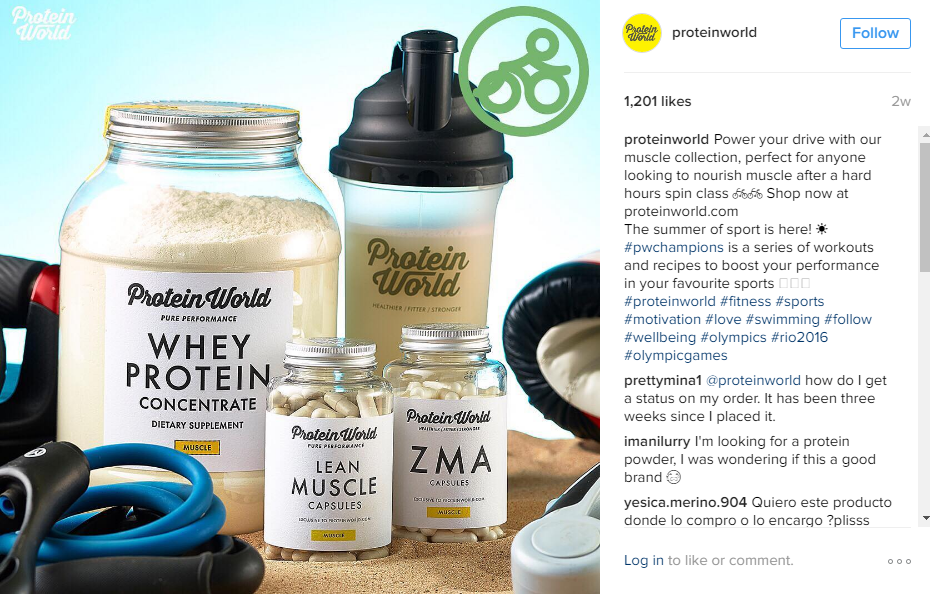
4. Not including calls to action
What do you want a potential customer to do once they’ve read your post? Go off and look at someone else’s content and forget about yours? Of course not – you want them to get more information, check something out, enter your competition or best of all, buy your product!
Using call to actions is a great way to simplify your reader’s experience and leave them with no question on what they should do next. Check out this example from ASOS .

This post from Samaritans demonstrates how easy it is to incorporate a call to action into a Tweet.
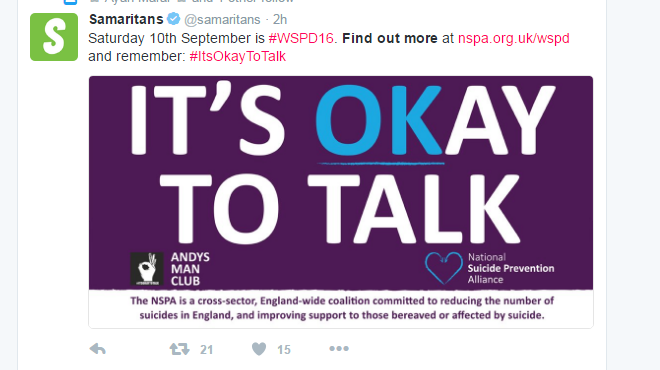
For more information on creating strong call to actions, check out this great article.
5. Uninspiring copy
Your copywriting is how you entice people to explore your brand and hopefully purchase whatever you’re selling, so make it exciting! What you don’t want is bland, forgettable copy to represent your business. Really go for it – use powerful, descriptive language to make an impact and encourage people to read on…or they just won’t. Not sure how? Check out this Instagram post by Nike.

6. Spelling and grammatical errors
This is a big one. Take extra care to eliminate spelling and grammatical errors from your copy. They make your brand look unprofessional, driving potential customers away. Look at it like this: a simple spelling mistake could be the deciding factor between someone choosing to use your business or not. They’re associated with a brand that is amateur or even untrustworthy.
Careless mistakes scream ‘we aren’t bothered’ rather than ‘trustworthy and reputable brand’. Which one would you rather be?
7. Not proofreading
The worst thing you can do before publishing your copy is not proofread it. It may seem tedious after spending ages writing something, but there are ways to make proofreading easier. Break your copy into paragraphs or words, and thoroughly check over each one for mistakes.
Copy and paste your writing into a word processor and run a spell check to make sure you haven’t missed anything. Don’t solely rely on these though – go over your work again or have someone else look over it to make sure it all makes sense.
Be sure to double check your Twitter and Facebook bios for any errors– these are the first places on your page that people will look. Here’s an article packed with hints and tips on how to proofread effectively.
So there you have it – some of the most common mistakes and how to avoid them in your marketing. By taking the time to put this into practice, you can build trust and faith in your brand among your followers through great copywriting.
